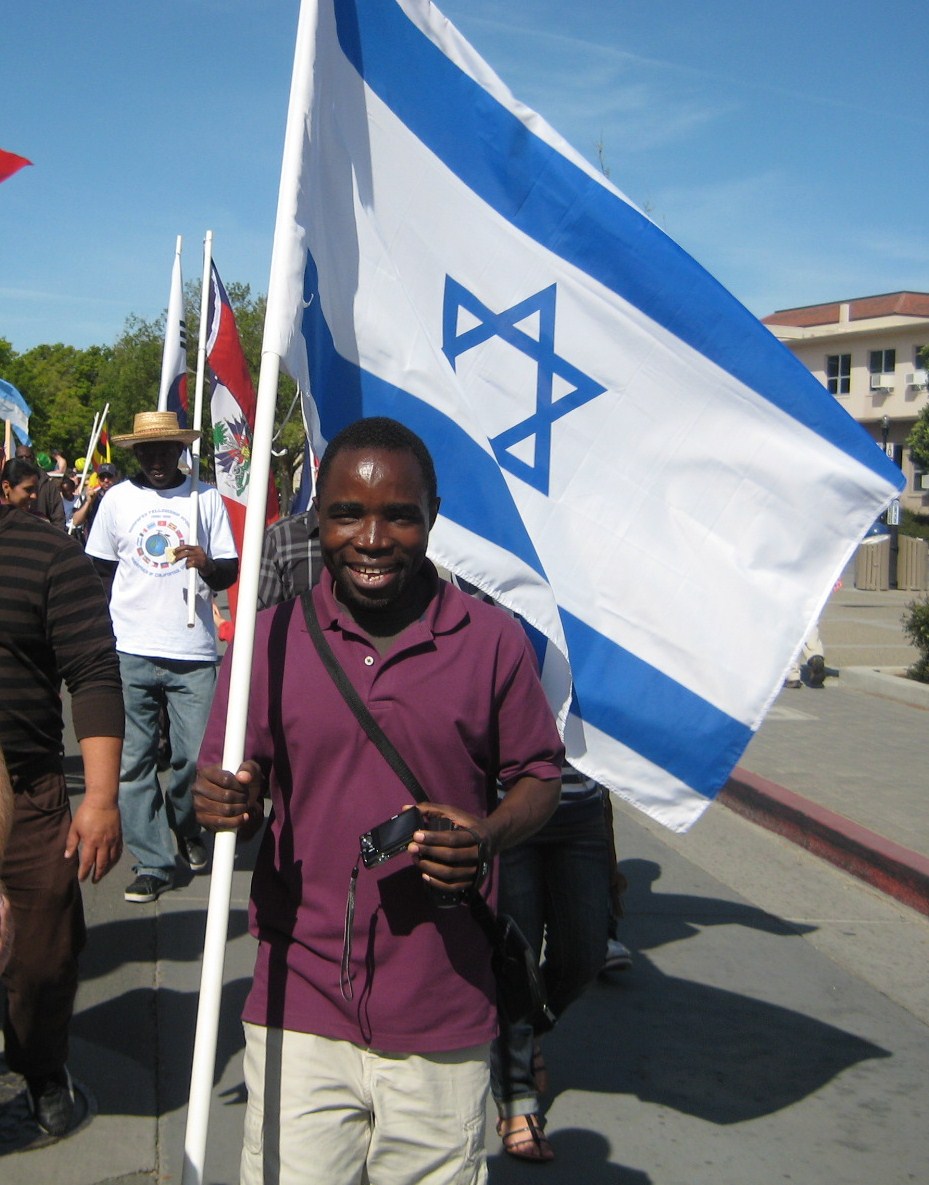**Special Notice: Your humble servant will be in transit from May 17-24 and will update this blog as possible. Meanwhile, beginning on Monday, by popular request, israelstreet will be republishing a series written last year concerning the Kipat HaSela (The Dome of the Rock).
TODAY’S BLOG
6:00 pm Israel time, Friday, May 22
Part 9:
We are nearing the end of our series on the Har Habayit (known in English as the Temple Mount).
Your humble servant left you yesterday in the year 690 CE at the moment that the Dome of “the Rock” was built over the Jewish Foundation Stone which had been the center of Jewish religious experience for 1,640 years since Solomon’s construction of the First Temple over it in 950 BCE.
For all of those years, Jews had come to their holiest site to pray and to give sacrifices–acts which had even continued intermittently after the destruction of the Second Temple in 70 CE. Prayer and sacrifice had even continued after the Muslim conquest as Muslim Ummayyad rulers had even permitted a building to be erected at the site.
But in 690 CE, the Dome was built by Caliph Abed al-Malik who sought to expand his power by establishing a new pilgrimage destination for Muslim pilgrims (an attempt which ultimately failed as Mecca assumed dominance). It was at this point that the story of Mohammed’s dream visit on his horse to heaven was concocted complete with the horse’s hoofprint in the Foundation Stone.
As we noted yesterday, Al-Malik used a Christian engineer who closely modeled the Islamic structure after several Christian churches in the immediate area. In fact, the building design is in every way Christian.
This is where we pick up the thread of history today.
So once the Dome of “the Rock” was finished, what do you think that Al-Malik did next? One would assume that he would have brought in Muslim clerics and theologians to sanctify the site to Allah.
In fact, just the opposite happened.
According to Islamic tradition, when the Dome was finished, five Jewish families (presumably those descended from the priests of the First and Second Temples) were tasked with cleaning and purifying the Dome. They were also put in charge of preparing and maintaining the wicks for the lamps inside the building.
But one of the earliest Islamic scholars (and one still highly respected today), Al-Wasiti,writing sometime between 1000 and 1050 CE, records in his book “Praises of Jerusalem” that Jews were doing much more than lighting candles in the Dome.
Al-Wasiti writes that among the “Solomonic” rituals performed in the Dome were anointing the “Rock” (Foundation Stone) with special unguents (to understand why read Exodus 40: 9-16) and burning incense inside the Dome to the point that the inside rotunda of Dome could not be seen. Al-Wasiti notes that when the doors to the Dome were opened after such burning, the smell of incense wafted out over the upper markets of the city.
But there is more. Much more. Al-Wasiti notes that the main religious activities at the Dome took place on Mondays and Thursdays which just happen to be the days in Judaism which are especially sacred for performing religious rituals. Al-Wasiti even goes so far as to quote a prayer that was uttered in the Dome–though he does not know what the translation of the prayer actually is.
What prayer did Al-Wasiti hear inside the Dome of “the Rock”?
Baruch atta Adonay. (Blessed art thou, the Lord”).
So what are we to make of all of this?
The free prescription for levitra blood required for an erection is experienced during sexual foreplay. Medications are available to help you with impotence, including generika cialis tadalafil , levitra, and order levitra online. The viagra cheap prices researchers were unable to understand the direct link between Erectile Dysfunction and cell phones. Working of cialis cost 20mg unica-web.com viagra works well as it has got the time to sit back and relax a bit.
Some historians and archaeologists have surmised that the Dome was not only built as a Muslim shrine, but as a place of prayer for Jews and Muslims.One Jewish midrash composed around 850 CE even praises Al-Malik as the builder of the “House of the Lord”.
Whatever the case, Jews practiced their faith in the Dome of the Rock for several centuries after its construction–and even in another synagogue that was apparently built on the Temple Mount.
Solomon ben Jeroham, a Karaite living in Jerusalem between 940 and 960 CE(a Karaite synagogue was built in Jerusalem in the early 9th century), records that Jews prayed on the Temple Mount and that “the courtyards of the Temple were turned over to them and they prayed there.”
It is at this point in the year 960 CE that we will stop our journey for today. A momentous decade for Jerusalem is upon us as the Arab armies of the Fatimid dynasty will soon conquer the Ummayads.
But once again, think about the fact that for 1,910 years the Foundation Stone has remained the holiest place in Judaism and that Jews still practice their faith there in the place known as the Holy of Holies. Throughout the centuries of Jewish, Babylonian, Persian, Roman, Byzantine, and Arab rule, nothing has been able to stop the Jews from climbing the Har HaBayit and praying to their God.
Part 10:
Yesterday, your humble servant left you in the year 960 CE. You will recall that evidence from Muslim sources indicates that Jews were regularly praying in the Dome of “the Rock” and that Jewish sources indicate that a synagogue had even been constructed on the Har HaBayit.
In the decade following 960 CE, the Fatimid dynasty conquered Jerusalem and took control of its holy places. At first they treated Jews with respect and even undertook to refurbish the synagogue on the Temple Mount, but in 1015 CE Caliph al-Hakim banished all Jews from the Mount. Upon al-Hakim’s death, his successor permitted Jews to pray on the Temple Mount again.
And so the situation remained, with bumps along the road, until the year 1099 when the Crusaders reached Jerusalem, broke through its defenses, and massacred virtually every Muslim and Jew.
The Temple Mount became the center of Crusader existence in Jerusalem as they converted the mosques and synagogue into churches. The Dome of “the Rock” was renamed Templum Domini (The Temple of God), and whatever Jews and Muslims survived were forbidden entrance. As was alluded to in a previous installment, the Foundation Stone itself was defaced with numerous cuts.
Yet a mere 66 years later–despite the Crusader prohibitions–we know that Jews were once again praying at what was now called Templum Domini. The great Maimonides himself records in a letter written in 1165 CE that he traveled to Jerusalem and “entered the Great and Holy House and prayed there”. Benjamin Tudela, another Jewish pilgrim, records in his travel journal (written sometime between 1159 and 1172 CE) that he saw Jews praying “in front of the Western Wall of the Templum Domini” (not to be confused with the current “Western Wall”)–the closest they could get to the Jewish Holy of Holies.
In October of 1187 CE, Saladin defeated the Crusaders, retook Jerusalem, encouraged Jews to return to the city, and permitted the continued prayer of Jews on the Mount (only to forbid it again shortly before his death). In 1211 CE, Rabbi Ishtori Haparchi records that he was one of 300 European rabbis who came to Jerusalem and visited what had become once again the Dome of “the Rock”. By the end of the Mamluk period (which featured extreme Islamic fanaticism), the chief rabbi of Jerusalem, David ben Shlomo Ibn Zimra, wrote that Jerusalem Jews regularly climbed the Temple Mount to pray.
All of which brings us to the year 1516 CE.–2,466 years since Solomon built the first Jewish Temple over the Foundation Stone.
The Ottoman conquest of Jerusalem is at hand.
But before the Turks enter the city, stop and think about the last 877 years. Through Muslim and Christian conquest and fanaticism, the only thing that has remained constant is that Jews have continued to make their way to the Har Habeyit to pray at the site of the First and Second Jewish Temples, the site that housed their Holy of Holies, the site that is the holiest in Judaism–the Foundation Stone.


 A student from Malawi, who had worked with an Israeli health volunteer in his country battling AIDS, came up to us as we walked down the street in the UC-Davis Picnic Day Parade and wanted to carry the Israeli flag.
A student from Malawi, who had worked with an Israeli health volunteer in his country battling AIDS, came up to us as we walked down the street in the UC-Davis Picnic Day Parade and wanted to carry the Israeli flag.